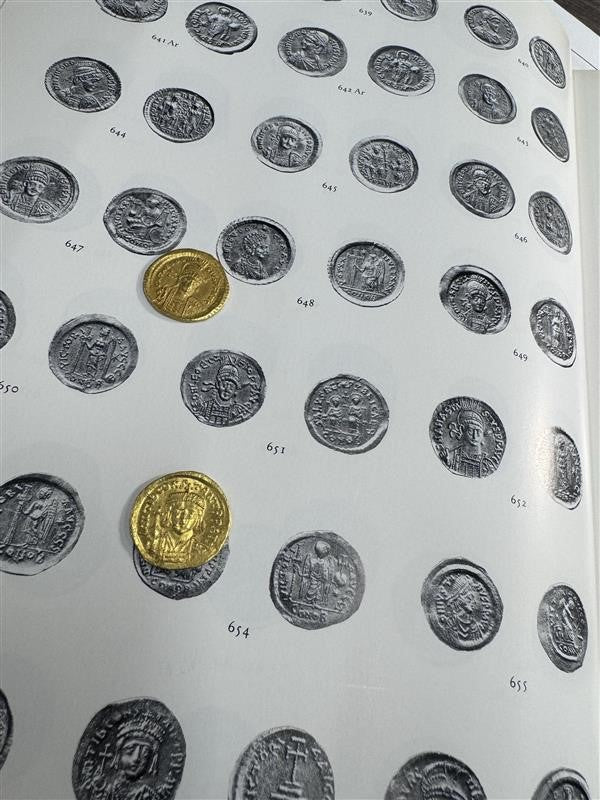Finding Lost Provenance on Ancient Coins
Introduction
Perhaps the most fundamental aspect of ancient coin collecting is figuring out where an ancient coin has been. Provenance, or pedigree, is the term often given to coins that have a previously established history. There are two types of provenance in the field of numismatics. One type refers to coins that have been in private collections and carefully taken care of, over a span usually consisting of a decade or more. These coins will have collection tickets, namesakes, tags, or any other identifier stating which collection they have belonged to. The second type refers to coins which have been in auctions or institutions, and will usually use the term “Ex.” before the respective pedigree. By placing "Ex__auction," it creates a paper trail which increases the value. "Ex" simply refers to coins which have appeared exclusive of.
Provenance on coins not only increases their value but also increases the collecting confidence and historical confidence in the timepiece. Numerous cultural heritage laws prevent certain coins from being legally exported into certain countries. By having an established pedigree for a coin, it allows for a paper trail of legality that proves the coin was taken out of its source country through legal means. It also adds to the authenticity aspect of a coin. Although many convincing fakes have been circulating the market for centuries, having a reputable firm or seasoned collector as a previous owner adds to the confidence that the coin is a genuine example of the type it describes.
Most collectors enjoy provenance for the thrill of the hunt. They want to trace where the coin has been throughout its life and see where it was taken out of the ground. It also creates a sense of connection with the ancestry of collecting, which not only adds to the appeal of the coin but also appears to add nostalgia for the piece. Seeing previous records of sale for a coin with thrilling provenance can help the collector grasp what the market was like decades, even centuries ago, depending on how old the pedigree is. By having an understanding of the evolution of the ancient coin market, it allows the collector to grasp the rarity and relative value of the piece in the modern day. It can also help predict how many of a certain example exist in the collecting field, as many auction houses will state the relative rarity of a coin. By viewing records from collections, institutions, or auctions, one can understand how many of a particular example will appear on the market in a relative timespan. For example, Athenian owls will appear in dozens of lots, denarii in hundreds, but some scarcer Greek coins may only appear once or twice every few sales, such as coins from Amastris, Kyzikois, and Aeolis. Although these “scarce” coins may not have a relative rarity in the grand scale of the market, it helps add satisfaction to the relative scarcity of a coin in any given sale.
Institutional collections, such as the British Museum, Copenhagen, ANS, Von Aulock, and Fitzwilliam collections, have become the standard reference for most of the obscure coin types, as the institutional collections are relatively complete. Sometimes, these institutions will sell examples of their collection to raise funds for various purposes. Then these coins become available to the collecting public, and being able to trace them back to an institutional collection or sale is essential in determining its provenance.
How to Find Lost Provenance
If a coin is purchased without any known provenance or collection history, it does not rule out the possibility that it may have a past on the market, it only makes it more challenging to hunt. Even so, some coins may have incomplete pedigrees that can be traced past what is already given. First, the collector must determine a reference point. In the example below, a coin minted in Leucas was given a pedigree when purchased from the Garrett sale in the early 1980s. Often, there is a deeper pedigree, and the Garrett catalog lists this coin as being sourced from JWG, Elder 23 February 1921, extending the pedigree by over sixty years.


In another instance, simply panning through old auction catalogs looking for matches is another approach. Going to websites such as CoinArchives, WildWinds, and third-party sites with PDFs of old auction sales is another avenue. Panning through institutional collections is another approach. In the example below, searching through the BMC catalog could be a great approach to finding coins the British Museum has sold off in the past that may currently be on the market with missing pedigrees.


Most often, numismatic literature will have a concordance towards the beginning or the back of the work with publications and sales of similar types. Once a coin is identified by variety, these tools may be useful in determining population estimates, hoard distribution, and even positive provenance IDs. If a coin is found with similar surfaces to the one inspected, it may indicate the example has been found in a similar hoard or is part of the same collection. Cabinet toning, patterns of corrosion, and purposeful marks/graffiti can all be indications of similar grouping which can aid in positive provenance identification.

Furthermore, if the collector does not have the spending budget to buy numerous publications and sales catalogs, simple online resources can be of aid. As mentioned before, sources such as CoinArchives and WildWinds are recent auction and identification tools for modern sales. They can serve as the starting point to find more detailed pedigrees of source coins. An important resource to find old publications and catalogs is the Newman Numismatic Portal (NNP), which hosts hundreds of various resources that have been out of print or are challenging to obtain.

An important way to discern catalog differences throughout time is by examining old sources. Many identifications for coins have changed over time, and in many cases, they are spelled differently with either a Greek or Latin pronunciation (depending on the cataloger). Many attributions have changed as well with incoming numismatic research. For example, the Macedonian Staters minted by the Thraco-Macedonian tribes are often cataloged as being from Berge, but in the past decades, they have been dubbed as being from Siris. When finding provenance for such a piece, it is important to realize how they have been listed in the past to avoid overlooking key details in possibly finding a positive match.


Finally, ensuring the pedigree is preserved in one’s own collection is important to preserving its legacy. Many collectors will not take the time to find a lost provenance, and it keeps the service alive when collectors and firms take the time to find a coin. By a collector doing his part in finding these lost pedigrees, it allows the coin to be enjoyed all the more when he passes on the coin to another person.


